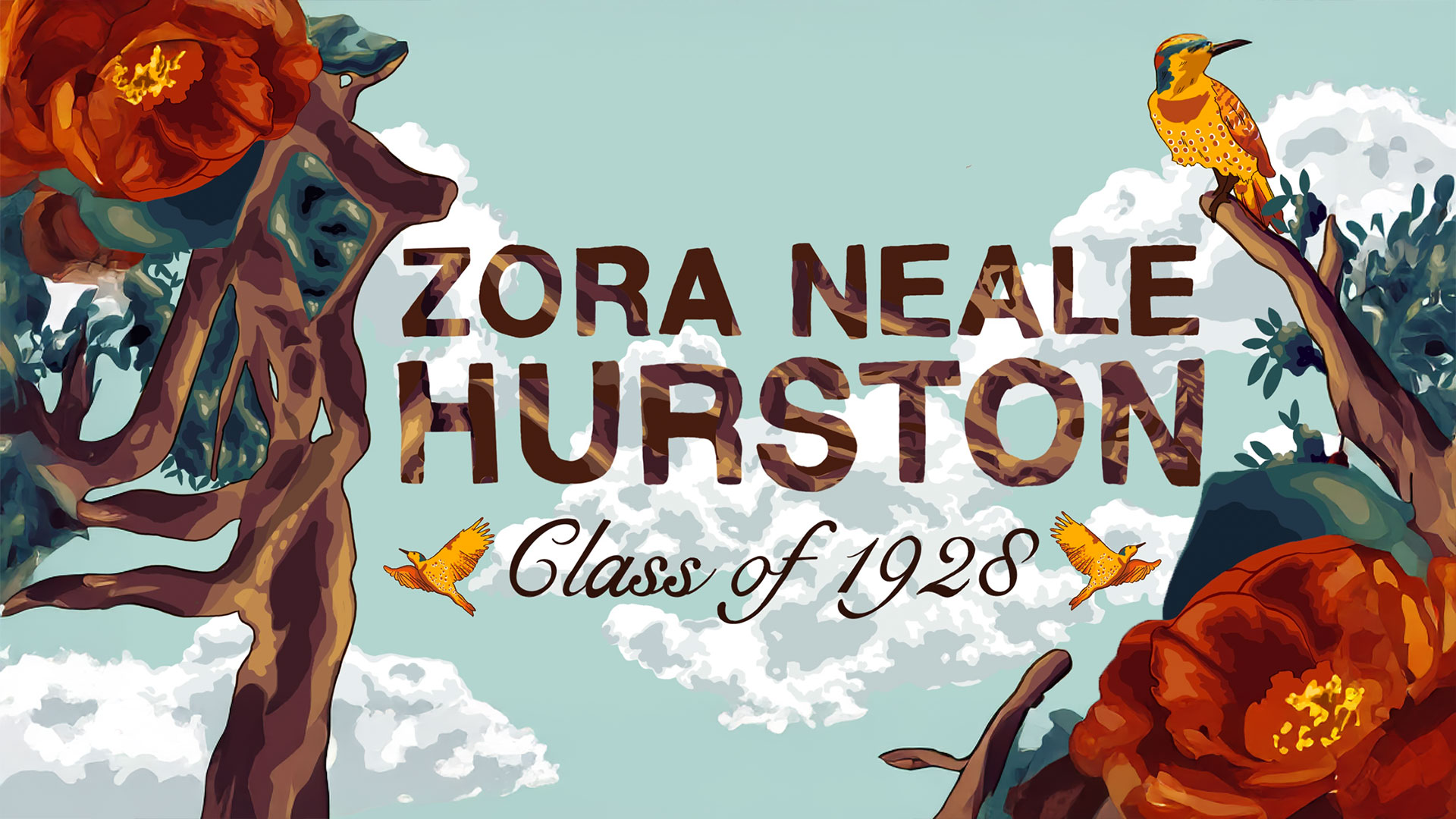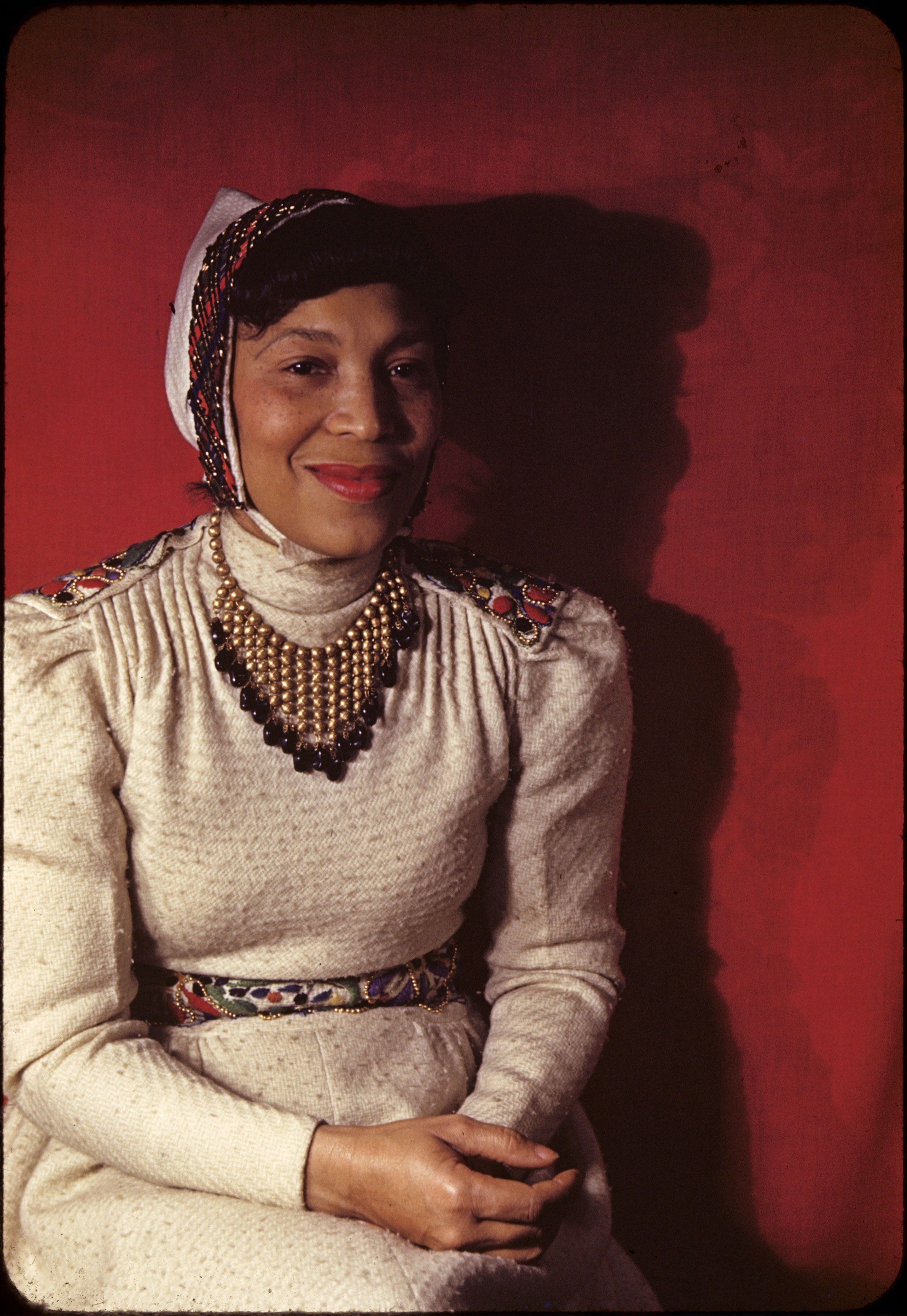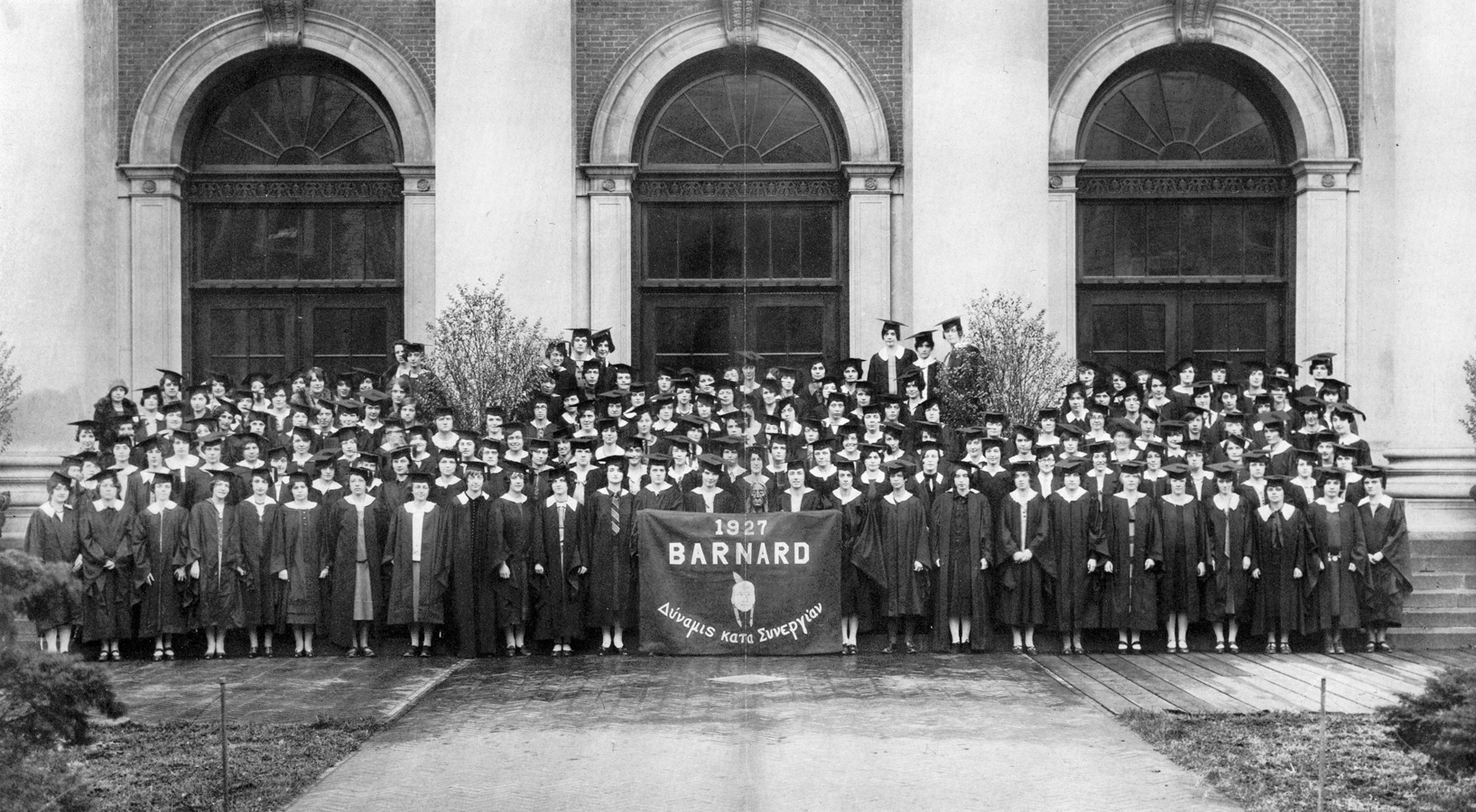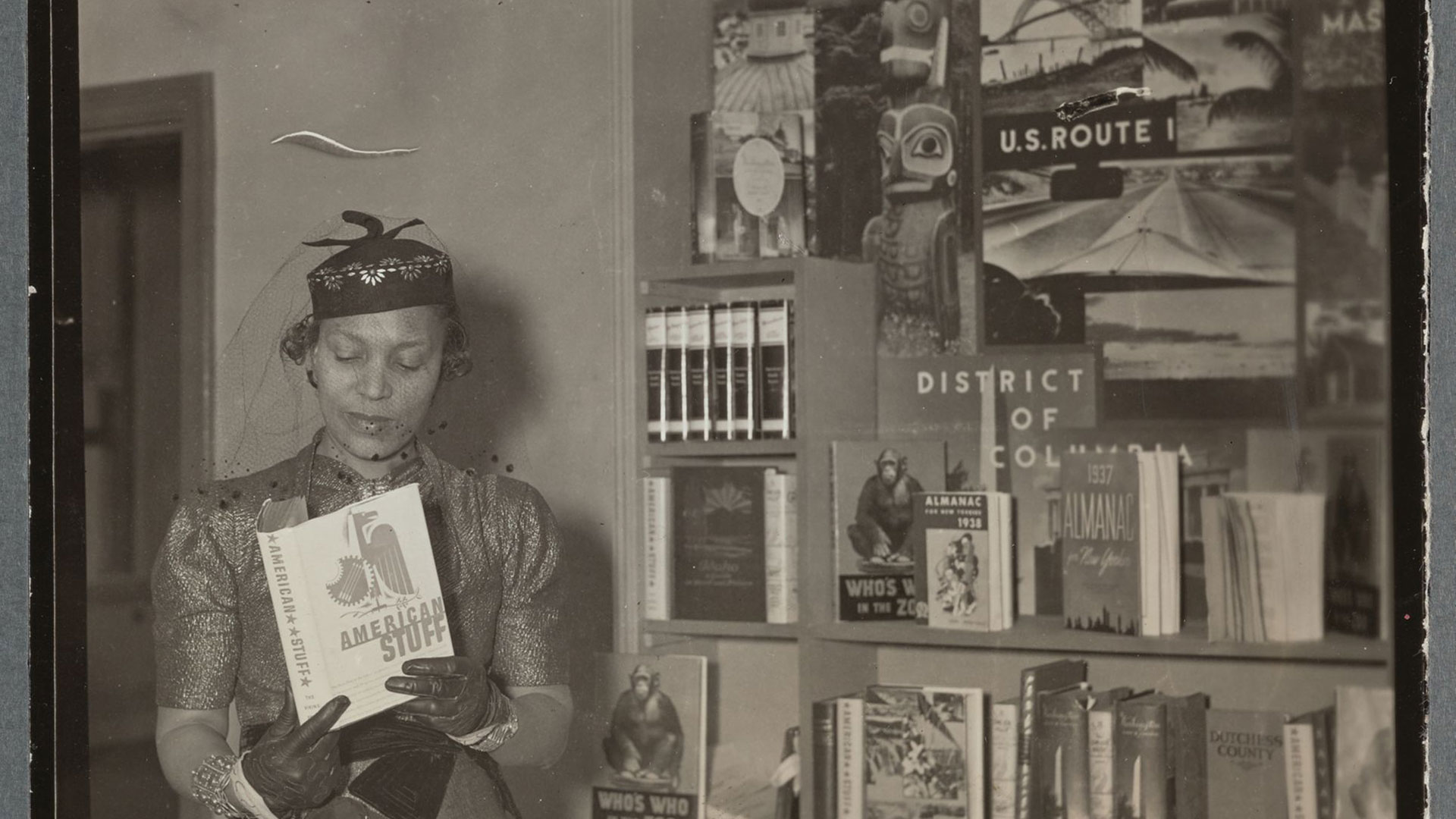Zora at Barnard

Hurston attended Howard from 1919 to 1923 — where she majored in English, published poetry, and worked to put herself through school — but did not complete her undergraduate requirements due to illness and lack of funds. By 1924, she decided that she was ready for a change. She left school and devoted her attention to writing and publishing short stories in various magazines. After her short story “Drenched in Light” appeared in Opportunity, an African American journal, the publisher encouraged Hurston to enter the journal’s first literary contest and to join others in New York City’s Harlem Renaissance, which she did the first week of January 1925.

Once in the City, at Opportunity’s awards dinner — where Hurston’s short stories and play won second place behind Langston Hughes’s work — Hurston met Annie Nathan Meyer, a co-founder of Barnard College. Meyer was extremely supportive of Hurston and offered her admission to the College. Determined to complete her college education, Hurston gladly accepted and worked feverishly with Meyer for months to raise funds for her tuition — Dean Virginia Gildersleeve hadn’t offered Hurston a scholarship, despite finding her “distinctly promising.”
In the fall of 1925, Hurston officially enrolled at Barnard, feeling “highly privileged and determined to make the most of it. I did not resolve to be a grind, however, to show the white folks I had brains. I took it for granted that they knew that. Else, why was I at Barnard? Not everyone who cries, ‘Lord! Lord!’ can enter those sacred iron gates.”

Already an award-winning writer who’d had great success in Harlem, Hurston struggled to fit in on Barnard’s elite, overwhelmingly white campus. She recorded this time in her essay “How It Feels to Be Colored Me”:
“For instance at Barnard. ‘Beside the waters of the Hudson’ I feel my race. Among the thousand white persons, I am a dark rock surged upon, and overswept, but through it all, I remain myself. When covered by the waters, I am; and the ebb but reveals me again.”
As at Howard, Hurston was never solely a student at Barnard but also engaged in numerous other activities. For just over a month, she acted as personal secretary to one of the most popular and highest-paid writers of her time, Fannie Hurst, who was greatly impressed by Hurston’s short story “Spunk.” Hurston became Hurst’s good friend and was deeply influenced by her throughout their years of friendship. Another extremely important influence in Hurston’s life during this period was Franz Boas, her professor in the majority of the anthropology classes she took at Barnard and Columbia. By his ideas and his example, he inspired her in the anthropological quests she was to embark on in the years ahead.
Life at Barnard had its ups and downs, as Hurston was not permitted to reside in the dormitories and, early on, was laughed at by classmates whenever she recited French. Though Hurston had won an academic scholarship in 1926, Dean Gildersleeve later admitted that she had reservations about Hurston’s ability to succeed, writing to Meyer, “I wonder if we really ought to encourage her to remain in college. … We have given her a grant from scholarship funds, but I feel a little uncertain about her.”
A couple of months later, possibly sensing the dean’s discouragement, Hurston wrote to her friend Countee Cullen, “The regular grind at Barnard is beginning to drive me lopsided. Don’t be surprised if you hear that I have suddenly taken to the woods.”
On February 29, 1928, Hurston received her undergraduate degree, becoming the first African American student known to have graduated from Barnard and to become the first trained Black anthropologist. She graduated with a major in English (not anthropology, as is often reported) and a minor in geology. The same year that she graduated from Barnard, Hurston wrote:
“I am not tragically colored. There is no great sorrow dammed up in my soul, nor lurking behind my eyes. I do not mind at all. I do not belong to the sobbing school of Negrohood who hold that nature somehow has given them a lowdown dirty deal and whose feelings are all hurt about it. Even in the helter-skelter skirmish that is my life, I have seen that the world is to the strong regardless of a little pigmentation more or less. No, I do not weep at the world — I am too busy sharpening my oyster knife.”

Along with her B.A., she was also awarded a fellowship by the Rosenwald Foundation for two years of anthropological work at Columbia University.
Franz Boas became Hurston’s mentor during her two years of graduate study at Columbia, after which she once again felt the urge to try new things and see new places. She returned to the South, and in 1931 she traveled primarily in Florida to gather experience and knowledge of African American folklore. In the years following this research, she also worked as a drama instructor at Bethune-Cookman College in Florida. But Hurston never lost touch with her alma mater. In 1932, she contributed her expertise in African American folk songs, dances, and rituals to the drama Black Souls, produced by Annie Nathan Meyer as a benefit for Barnard.
In 1934, Hurston published her first novel, Jonah’s Gourd Vine. The story takes place in a small, all-Black Florida town, much like her hometown of Eatonville, and draws heavily on the anthropological and folkloric research that had occupied Hurston during the four previous years of her life. Her second book, Mules and Men (1935), also focuses on the African American culture in which she had always been immersed. As a guest of honor at a 1935 meeting of the Barnard Club of Bergen County, New Jersey, Hurston described her experiences collecting folklore for Mules and Men and autographed copies of the book for the Barnard alumnae and guests in attendance. In 1937, she published what would become her seminal novel, Their Eyes Were Watching God.

Though Hurston never stopped publishing over the decades, she also never earned what she deserved and died in poverty and obscurity after suffering a stroke at age 69, on January 28, 1960. When Alice Walker, who was heavily influenced by Hurston, traveled to Florida to place a marker at Hurston’s gravesite and then wrote about it for Ms. magazine, the world, and Barnard, took notice.
Hurston’s life’s work combined her training and interest in literature, history, theatre, and performance, as well as folklore and anthropology; it enriched and transformed the disciplines of anthropology and American and African American literature. Her legacy can be seen in the work of Black Barnard writers and other luminaries who similarly span disciplines to tell the stories of Black people and their cultures.
